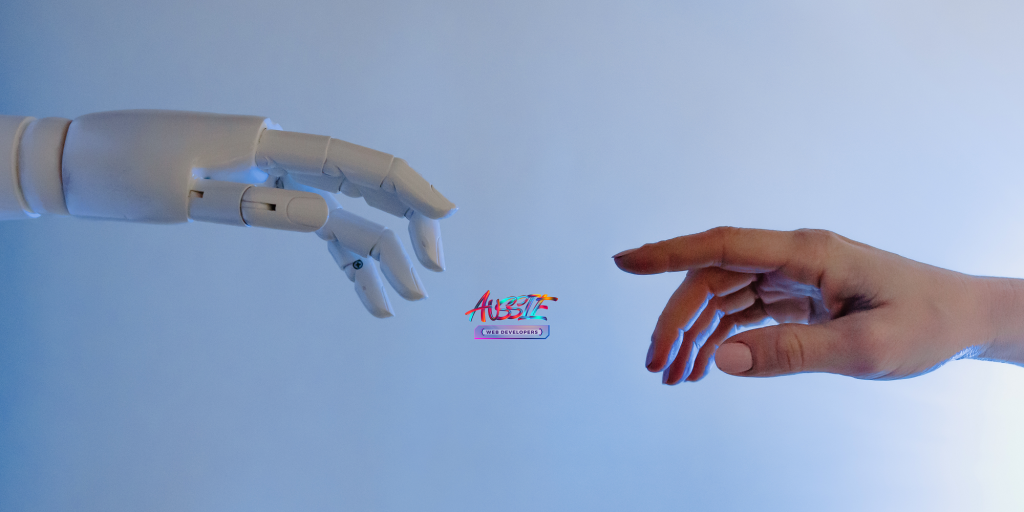Many companies and inventors are trying to maximize AI’s potential. When debating how AI will transform businesses, user experience is often disregarded. You were right! Understanding UX will help you maximize AI. We’ll discuss how UX and AI may improve productivity, satisfaction, and communication.
UX: Introduction
UX is essential for all digital products and services. All user activity on a website, app, or program is covered. Making user interactions easy and rewarding.
Investigating and assessing needs and actions is UX. Knowing how people use technology helps designers create intuitive interfaces. User efficiency is maximized without frustration or confusion.
UX is about functionality and purpose. Streamlining, reducing mental burden, and eliminating distractions are crucial.
UX design creates effective and attractive interfaces. Graphic designers may provoke emotions and boost brand recognition by choosing colors, typefaces, pictures, and layouts.
Modern UX design prioritizes user accessibility, even for disabled users. Inclusive design makes AI apps accessible and intuitive.
UX designers must consider the user’s perspective and need to create simple, compelling interactions.
What Is AI?
AI strives to create machines with human-like intellect and behavior. This discipline focuses on creating models and algorithms for computers to learn and anticipate.
Artificial intelligence aims to provide machines with human-like perception, cognition, and behavior. Examples include robotics, NLP, computer vision, and others.
Without any help from a person, computers can learn with unsupervised machine learning. Machine learning algorithms can look through huge amounts of data for patterns and use those patterns to make decisions or predictions.
Using “natural language processing,” computers can read and write human language. Voice assistants and chatbots use it.
The study of teaching computers to “see” and interpret moving images is machine vision. Facial recognition and driverless vehicles are possibilities.
In robotics, hardware, and AI produce self-sufficient devices. These robots help with household and factory activities.
The rapid growth of AI could impact several businesses worldwide. The exponential rise of technology bodes well for AI.

How does AI affect UX design?
Harnessing AI’s potential requires user experience design. We can design intuitive user interactions that improve the experience by combining UX with AI.
Create intuitive AI interfaces leveraging UX best practices. Designing tailored AI experiences requires deep user behavior and preference knowledge. User satisfaction and usability increase.
Also, UX helps remove biases in AI algorithms. Inclusive design lets us accommodate all users in these systems. Because of cultural and accessibility factors, user outcomes are more consistent.
With UX and AI, we can develop conversational interfaces that sound more human. Designers take word choice, speech structure, and language into account. It is possible to make human-machine communication more engaging.
Furthermore, iterative design cycles for continuous improvement are made possible by UX approaches. The usability and efficiency of a system can be enhanced by designers with early and frequent user feedback.
The Research Case for UX/AI
There are several ways that AI and UX could improve personalized interactions and the user experience. NLP improves how well chatbots understand and answer user questions. User experience elements like simple language and easy navigation could make it possible for chatbots to talk like people.
Suggestions powered by AI are another instance. Based on user preferences and history, they make content and item recommendations. When paired with UX features like personalization, simplicity, and clarity, these recommendations benefit end users.
Siri and Alexa show how UX and AI can work together. Machine learning helps digital assistants understand and handle what users ask for. These apps are successful because they know what users want and give them an easy-to-use interface.
AI-enhanced image recognition transformed e-commerce. Advanced computer vision algorithms and user interface design allow users to search for products visually rather than textually.
Proof that AI and UX may improve usability, productivity, and satisfaction. Designers must consider both when incorporating AI technologies.
Value of UX-AI
AI can improve user interfaces by combining them with UX principles. Customers will feel more comfortable with AI systems with this change.
AI and user experience design revolve around customization
Data analysis and machine learning allow AI to comprehend human preferences and adapt its answers. User happiness increases when suggestions and answers are personalized.
Chatbots and other AI-enabled virtual assistants can answer consumer questions faster and more accurately. Businesses save time and become more efficient.
Fourthly, UX and AI enable data-driven insights. These insights can help firms find patterns, trends, and ways to improve products and services.
Predictive analytics, content curation, and recommendation engines can be automated with AI and UX. Efficiency and effectiveness save time and effort.
When UX principles are combined with AI, firms may better meet customer requests and innovate.
AI and UX design may improve user experiences, productivity, data-driven insights, automation, and creative issue solutions.

Problems with UX-AI
AI in user experience design has pros and cons. In these areas, UX-AI encounters challenges:
Overautomation is a risk of using AI in user experience. fewer individuals and less personalized touches may result.
AI algorithms have improved, yet they can’t read human emotions and complexity. Users may struggle to connect with technology if their interactions feel robotic or disinterested.
UX apps introduce AI into daily life, raising ethical problems. Responsible deployment entails correcting data leaks, algorithmic bias, and privacy breaches.
Even if well-designed UX streamlines complex processes for customers, adding AI can raise complexity and learning curves for designers and end-users.
High-quality training data sets are crucial to AI decision-making. If these datasets are faulty or biased due to shoddy data gathering or unbalanced sources, system performance may suffer.
Businesses using UX with AI solutions must be aware of the potential negatives and try to eradicate them by improving the user experience and fixing any flaws.





